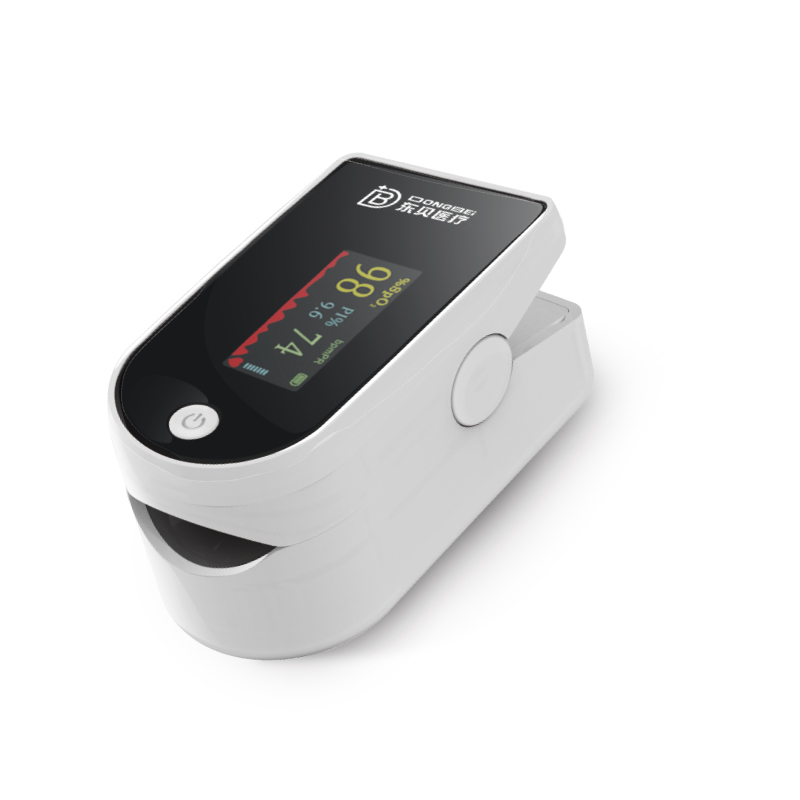Function:
The primary function of the Pulse Oximeter is to measure arterial oxygen saturation (SpO2) and pulse rate in a noninvasive manner. It achieves this through the following steps:
Light Emission: The device emits specific wavelengths of light, often red and infrared, into the body part where blood vessels are easily accessible, such as a fingertip.
Light Absorption: The emitted light passes through the tissue and blood vessels. Oxygenated hemoglobin (HbO2) absorbs less red light but more infrared light, while deoxygenated hemoglobin absorbs more red light and less infrared light.
Signal Detection: The device detects the amount of light absorbed by hemoglobin and calculates the oxygen saturation level (SpO2) based on the ratio of oxygenated to deoxygenated hemoglobin.
Pulse Rate Measurement: The device also measures the pulse rate by detecting the rhythmic changes in blood volume within the blood vessels, often corresponding to the heart's beats.
Features:
Noninvasive Measurement: The device offers a noninvasive approach to measuring arterial oxygen saturation and pulse rate, ensuring patient comfort and safety.
Dual Wavelengths: Many pulse oximeters use dual wavelengths of light (red and infrared) to accurately calculate oxygen saturation levels.
Real-Time Monitoring: The device provides real-time oxygen saturation and pulse rate readings, allowing healthcare providers to monitor patients continuously.
Compact Design: Pulse oximeters are compact and portable, making them convenient for use in various clinical settings and even at home.
User-Friendly Display: The device features a user-friendly display that shows oxygen saturation percentage (SpO2) and pulse rate in an easily interpretable format.
Quick Assessment: The device provides rapid results, enabling healthcare professionals to make prompt decisions based on oxygen saturation levels.
Advantages:
Early Detection: Pulse oximeters aid in the early detection of oxygen desaturation, helping healthcare providers intervene promptly to prevent complications
Noninvasive Monitoring: The noninvasive nature of the device eliminates discomfort and the risk of infection associated with invasive monitoring methods.
Continuous Monitoring: Pulse oximeters offer continuous monitoring capabilities, especially beneficial during surgeries, post-operative care, and critical situations.
Easy to Use: The device's user-friendly design and operation make it easy for both healthcare professionals and patients to use and understand.
Convenience: The compact and portable design allows for monitoring patients in various settings, making it a versatile tool in healthcare.
Patient-Centric Care: Pulse oximeters contribute to patient-centric care by providing critical information about oxygen levels, aiding healthcare providers in making informed decisions.



